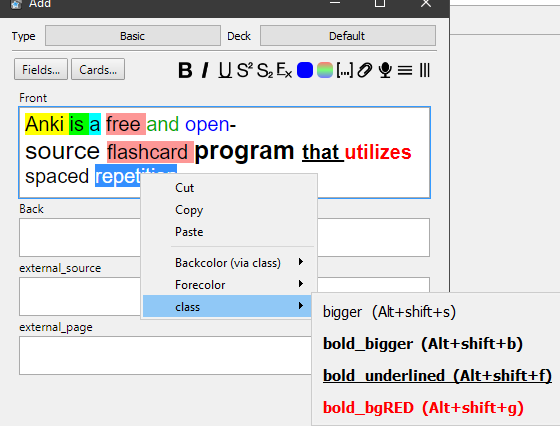

The second reason we use flashcards is it’s a great note-taking tool. Of course, if you have difficulty remembering a word, the spacing will stay close. Want more great language learning tips from people who’ve learned to speak 10+ languages? Sign up to our email list below.
Apps to use for Anki, and how to sync between desktop and mobile. How to get started with Anki- getting through the complex user interface. Why use Anki for flashcards (or maybe why not!). 
How to best use flashcards (irrespective of which system you use).
 Why use flashcards for language learning (or why not…). In this guide on how to use Anki, we’ll go over everything you’ll need to know about how to use Anki to learn languages faster. But that’s why we have this guide - to help you get started with Anki learning languages.Īlso read: Our favourite apps for language learning, and how to use them How to Use Anki for Learning Languages - A Quick Overview Mostly because it’s a little clunky and complicated. There are also a few reasons you may not like Anki. There are loads of free decks for you to learn things - mostly in the language-learning and the medical sphere. It’s really flexible (extensible, customisable, etc.), and. It’s widely used (so everyone has tips/resources),. There are many reasons why Anki is our favourite flashcard tool. Do you know how to say this in a language you’re learning? And Anki is still the best flashcard tool, and one of the best ways to learn hard-to-learn words and phrases. Maybe you’ll learn organically.īut either way, at some point there is going to be a series of words that are hard to learn. (And if you really do find them boring, try these more fun ways of drilling in words.) Even though you hate them, flashcards are one of the best ways of learning difficult words. A quick introduction to on how to use Anki to learn languages - still the best flashcard tool for learning languages.Įveryone tells you you should use flashcards… but you hate flashcards! Join the club.
Why use flashcards for language learning (or why not…). In this guide on how to use Anki, we’ll go over everything you’ll need to know about how to use Anki to learn languages faster. But that’s why we have this guide - to help you get started with Anki learning languages.Īlso read: Our favourite apps for language learning, and how to use them How to Use Anki for Learning Languages - A Quick Overview Mostly because it’s a little clunky and complicated. There are also a few reasons you may not like Anki. There are loads of free decks for you to learn things - mostly in the language-learning and the medical sphere. It’s really flexible (extensible, customisable, etc.), and. It’s widely used (so everyone has tips/resources),. There are many reasons why Anki is our favourite flashcard tool. Do you know how to say this in a language you’re learning? And Anki is still the best flashcard tool, and one of the best ways to learn hard-to-learn words and phrases. Maybe you’ll learn organically.īut either way, at some point there is going to be a series of words that are hard to learn. (And if you really do find them boring, try these more fun ways of drilling in words.) Even though you hate them, flashcards are one of the best ways of learning difficult words. A quick introduction to on how to use Anki to learn languages - still the best flashcard tool for learning languages.Įveryone tells you you should use flashcards… but you hate flashcards! Join the club.







 0 kommentar(er)
0 kommentar(er)
